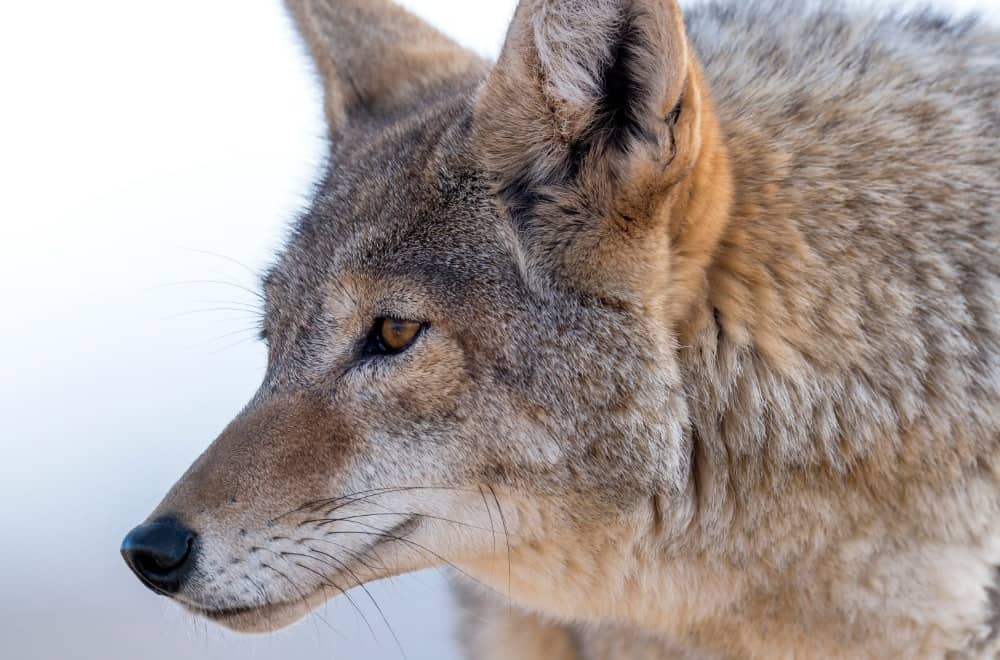Situations and Solutions
Eating garbage, in your yard, or attacking pets:
- Make sure pets are inside when coyotes are present, especially at night. Keeping pets in an outdoor run is an option.
- Do not feed coyotes. Never leave pet food outside or discard edible garbage where coyotes can get to it. Urban coyotes are often drawn to yards by the presence of crab apple trees and have even been found climbing trees to get at the apples. Crab apples can comprise up to 40% of an urban coyote's diet. Coyotes are also becoming more urbanized as their prey (such as jackrabbits) moves into town to exploit abundant food sources.
- Secure garbage containers Eliminate odours by using ammonia or cayenne pepper.
- Trim and clear any shrubbery near ground level that provides cover for coyotes or their prey.
- Make loud noises to encourage them to leave your yard.
Coyotes preying on young livestock: This is not a common occurrence but when predation does occur, it is most frequent in late spring and early summer when coyotes are feeding pups.
- Be sure it is a coyote that is responsible and not a free-running dog by checking tracks or signs of a struggle.
- Exclusion fencing is most effective by using woven or welded wire fencing at least 1.5m high with an outward overhang to prevent jumping over.
- Use guard/herd dogs to protect at night. Guard donkeys/llamas have also proven effective. Make sure all small livestock are securely inside at night.
- Practice clean farming by disposing of all dead young livestock by burying or burning. Don’t leave carcasses in areas where you don’t want the coyotes to be.
Coyotes can be deterred from an area by applying wolf urine and playing wolf calls at dusk.
Natural History
The Indigenous called this member of the Canid family a trickster or culture hero who was often used as a main character in creation myths. Coyotes are creatures of great intelligence and sociability but they are also the victim of rumour and misinformation. Standing less than 60 cm and weighing on average 12 kg, this species varies in colour from white-grey to tan with a reddish tint to the coat. The ears and nose appear long and pointed. Their sense of smell is highly developed and is used to detect prey and the scent left by other coyotes as territorial markers. Acute hearing is also used for detecting prey and avoiding danger. Females can have 5-6 pups annually. A Coyote’s lifespan is 8 years on average. They are monogamous and will hunt in pairs or packs. They are considered a carnivore but are highly adaptable to change their diet based on resources in their habitat. The coyote is an opportunistic omnivore, eating fruits and vegetation along with small mammals and insects.
Loss of habitat and traditional food sources have forced coyotes to cohabitate with humans. Coyotes have adjusted to hunting livestock and due to this adaption, humans have declared war on coyotes by hunting, trapping, and poisoning them. It is estimated that 30-50% of adult coyotes die each year from human- related causes. Coyotes are able to compensate for this by breeding at younger ages and having more offspring. Classified as nuisances, coyotes are actually a valuable member of the wildlife community. By feeding on rodents and other undesirable animals they help prevent damage to crops. As a scavenger they will kill and eat old, sick, or injured animals unfit for survival.


